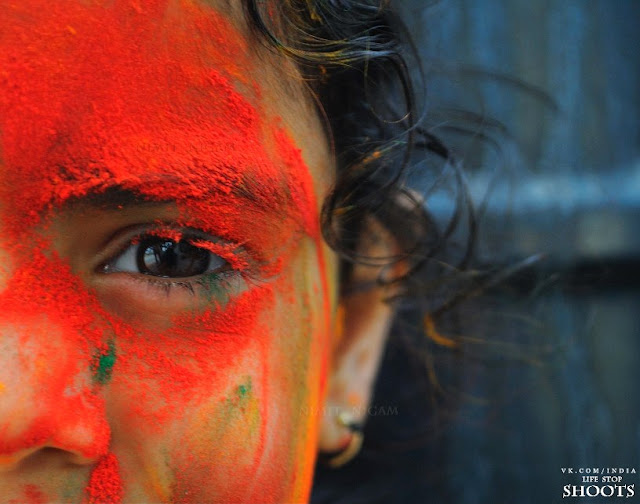Source text - Wikipedia, the free encyclopedia Rangapanchami occurs a few days later on a Panchami (fifth day of the full moon), marking the end of festivities involving colors.Every year, thousands of Hindus participate in the festival Holi. The festival has many purposes. First and foremost, it celebrates the beginning of the new season, spring. Originally, it was a festival that commemorated good harvests and the fertile land. Hindus believe it is a time of enjoying spring's abundant colors and saying farewell to winter. It also has a religious purpose, commemorating events present in Hindu mythology. Although it is the least religious holiday, it is probably one of the most exhilarating ones in existence. During this event, participants hold a bonfire, throw colored powder at each other, and celebrate wildly.The main day, Holi, also known as Dhuli in Sanskrit, or Dhulheti, Dhulandi or Dhulendi, is celebrated by people throwing scented powder and perfume at each other. Bonfires are lit on the eve of the festival, also known as Holika Dahan (burning of Holika) or Chhoti Holi (little Holi), after which holika dahan prayers are said and praise is offered. The bonfires are lit in memory of the miraculous escape that young Prahladaccomplished when Demoness Holika, sister of Hiranyakashipu, carried him into the fire. Holika was burnt but Prahlad, a staunch devotee of god Vishnu, escaped without any injuries due to his devotion. Holika Dahan is referred to as Kama Dahanam in South India.Holi is celebrated at the end of the winter season on the last full moon day of the lunar month Phalguna (February/March), (Phalgun Purnima), which usually falls in the later part of February or March. In 2009, Holi ('Dhulandi') was on March 11 and Holika Dahan was on March 10. In 2010, Holi was on March 1 and Holika Dahan was on February 28. In 2011, Holi was on March 20 and Holika Dahan was on March 19. In 2012, Holi was on March 8.
In most areas, Holi lasts about two days. Holi lowers (but does not remove completely) the strictness of social norms, which includes gaps between age, gender, status, and caste. Together, the rich and poor, women and men, enjoy each other’s presence on this day. No one expects polite behavior; as a result, the atmosphere is filled with excitement, fun and joy.
Though there have been references in Sanskrit texts to similar festivals, like ratnavali where people sprayed coloured waters using bamboo syringes, the origin of the modern Holi festival has been traced to ancient Bengal. It was a Gaudiya Vaishnavfestival, in accordance to Vaishnaviya Tantra. People went to Krishna temples, applied red color to the icon and then distributed the red coloured powder or Abir along with malpua prasad to family and friends. Red signified the colour of passion and Lord Krishna is the king of desires. The ritual signified that all our desires should be diverted for the attainment of Krishna and for the well being of society.
In some cultures though, the ritual of burning wood and leaves on the full moon night already existed. This ritual was to signify the end of winter and full advent of spring. Old wood and leaves that had fallen were burnt to signify that it was time for new leaves and flowers. People then smeared their bodies with ash. Later, however, the story of Holika Dahan became associated with this ritual.
In some cultures though, the ritual of burning wood and leaves on the full moon night already existed. This ritual was to signify the end of winter and full advent of spring. Old wood and leaves that had fallen were burnt to signify that it was time for new leaves and flowers. People then smeared their bodies with ash. Later, however, the story of Holika Dahan became associated with this ritual.






































































No comments:
Post a Comment